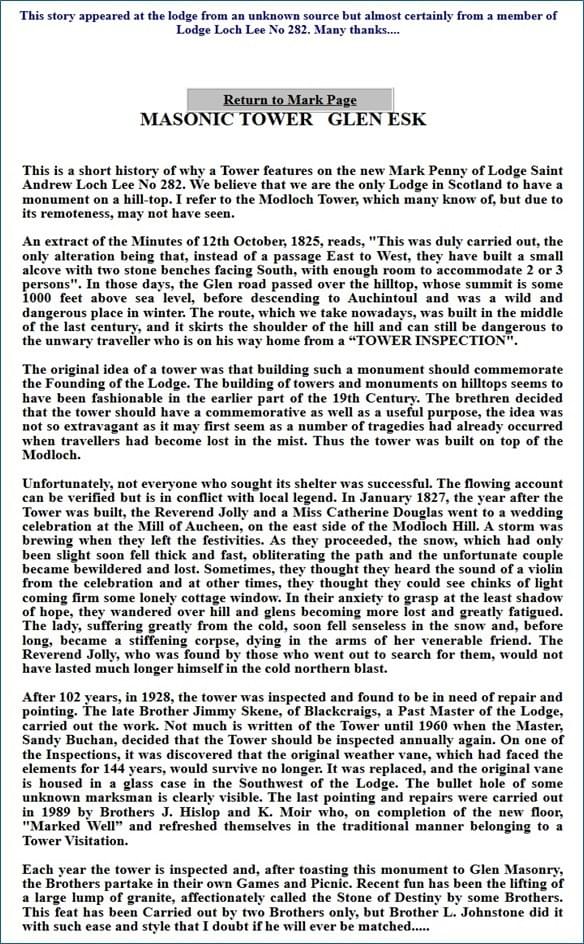When talk turns to Scotland’shistoric lifting stones, Glen Esk is not usually the first name mentioned. But hidden beside the Modlach Tower lies a curious stone with its own history, linked to the traditions of local Masons. After much research, false leads, and a visit to the site itself, this stone has been confirmed and reintroduced to the wider lifting community.
Research Begins
The trail started with a single mention on the IronMind forum. Peter Martin noted that Donald Dinnie, the most famous of all Scottish strongmen, had once lifted a “lump of granite” in Glen Esk. It wasn’t much to go on, but it was enough to spark a search.
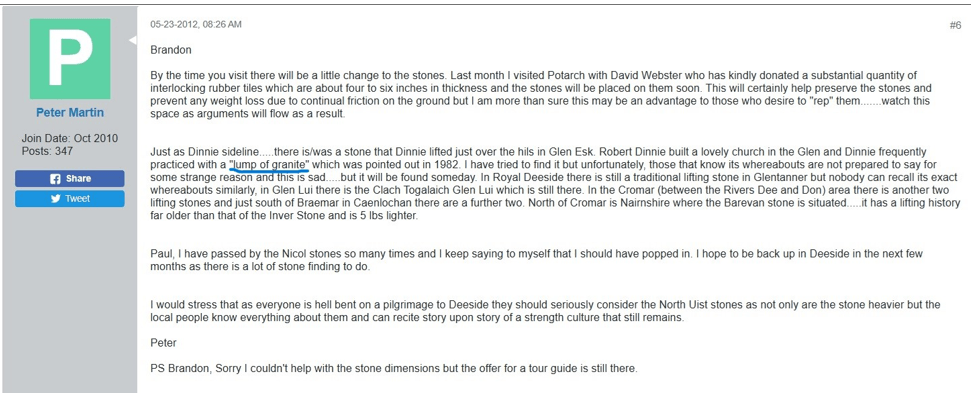
Digging deeper, I found an article describing Masons who inspected Modlach Tower. As part of their visit, they were said to “lift a large lump of granite,” referring to it as “the stone of destiny.” The connection between the tower and the lifting tradition became clear, but the actual stone was still to be found.
Dead Ends and Cold Trails
I reached out to the Glen Esk Folk Museum through Facebook. The staff were kind and helpful, and one mentioned a local man who knew about the stone. His name was Mr. Skene, and I was passed his email. I wrote to him, but weeks went by without reply. Even after follow-ups through the museum, nothing came back. The lead had gone cold
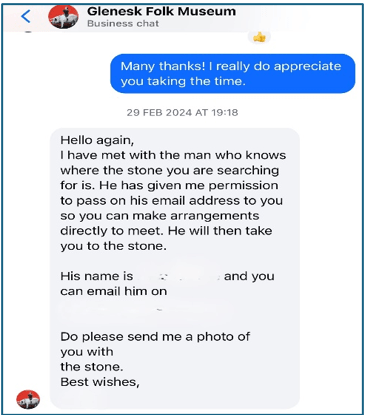
Rather than wait any longer, my partner Dawn and I decided to make the trip to Glen Esk ourselves to see what could be discovered in person. At the museum, no one could give a clear answer. They knew the tradition of the tower, but not the whereabouts of the stone itself.
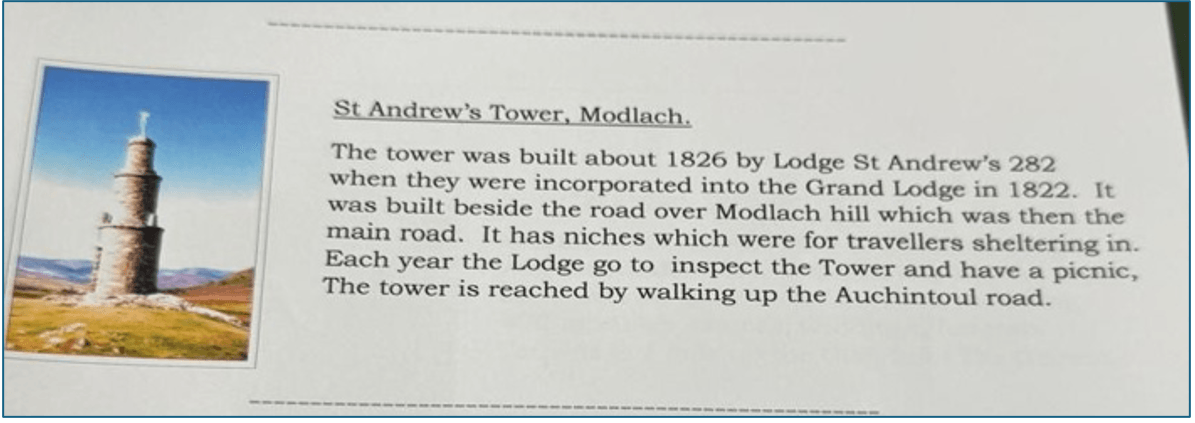
We hikedup to Modlach Tower, a striking monument. On the inside door was a laminated sheet retelling the same story I had read online: the Masons of Glen Esk had once visited here and lifted a granite stone. It was reassuring to see the tale written down locally, but the mystery of the stone remained
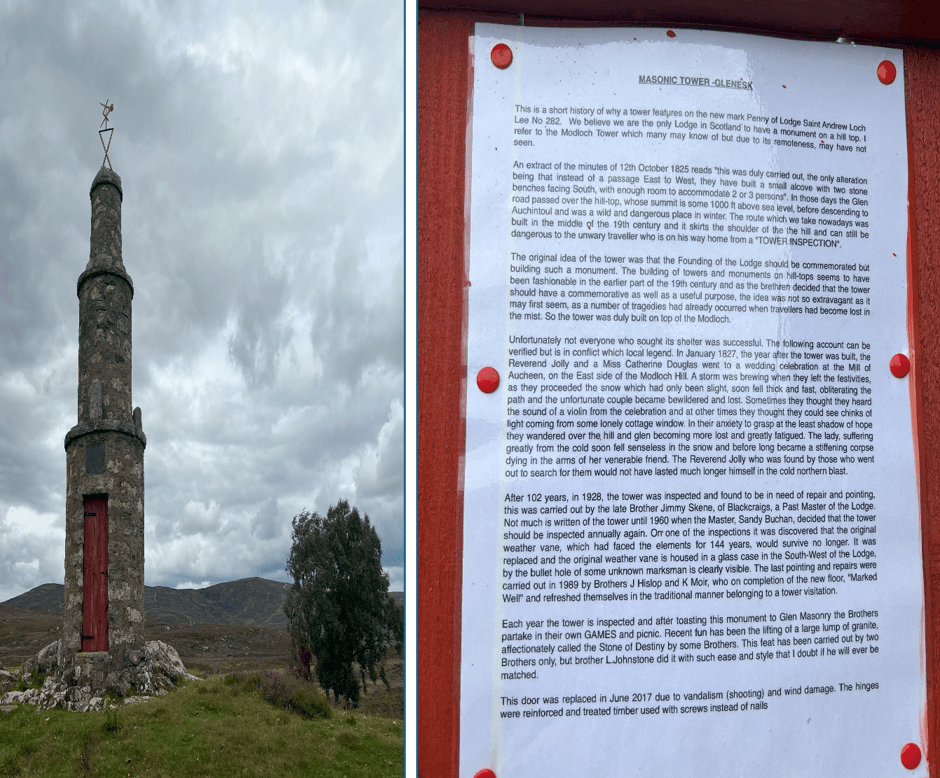
We searched the ground. The areawas littered with rough granite, most of it dark, moss-covered, and settled into the landscape. But behind the tower, Dawn noticed something different: a small, bright white stone, and strangely out of place. She pointed it out to me, and I dug it from the earth where it had sunk slightly. To me, it seemed too small, too modest, and I dismissed it. Dawn, however, felt differently. She thought it was perfect and insisted it had something special about it
I carried it out for her, and shelifted it several times, even walking with it. For her it was ideal. To test it
myself, I pressed it overhead. When we later weighed it, the scale read 58.35kg.
At the time, I discounted it. My mind was fixed on something much larger, more in line with the great lifting stones of the Highlands.
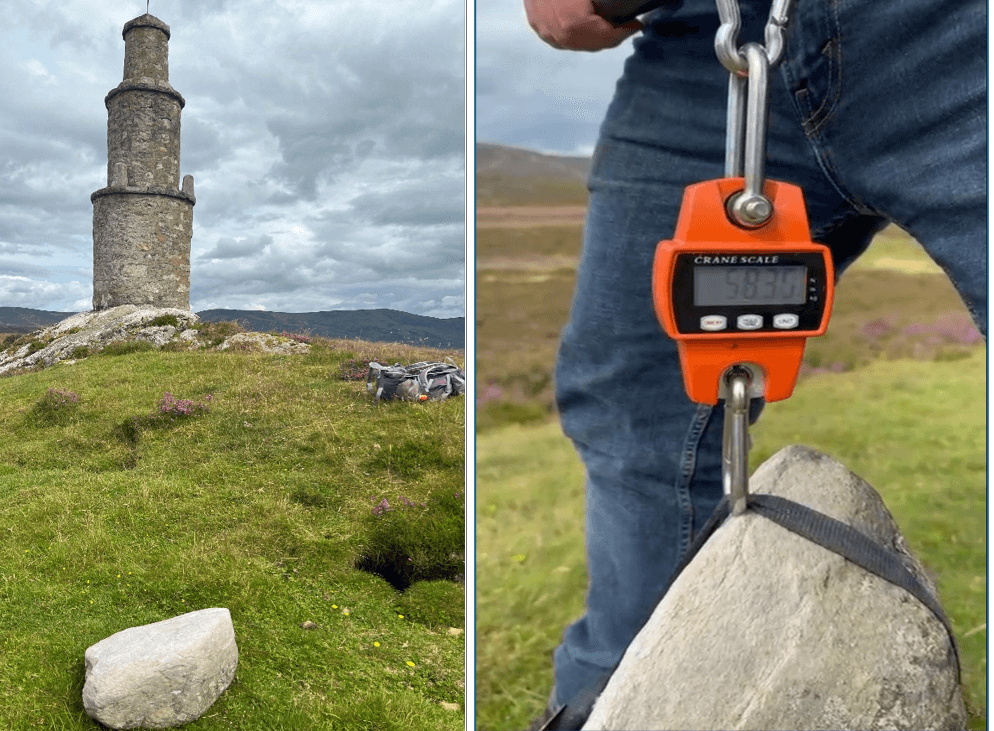
A Larger Find
Around the tower, I searched further into the heather, expecting something akin to the Glenlivet Stone. Even if the Mason’s Stone could not be found, I wanted to honour the place by lifting a worthy stone. After some hunting, I pulled out a massive, rough lump of granite, weighing in at 173 kg. A proper test.
With little kit on hand, I lapped it and left it there. I named it after the tower: The Modlach Stone. A new challenge for future lifters, if not the original stone of the Masons.
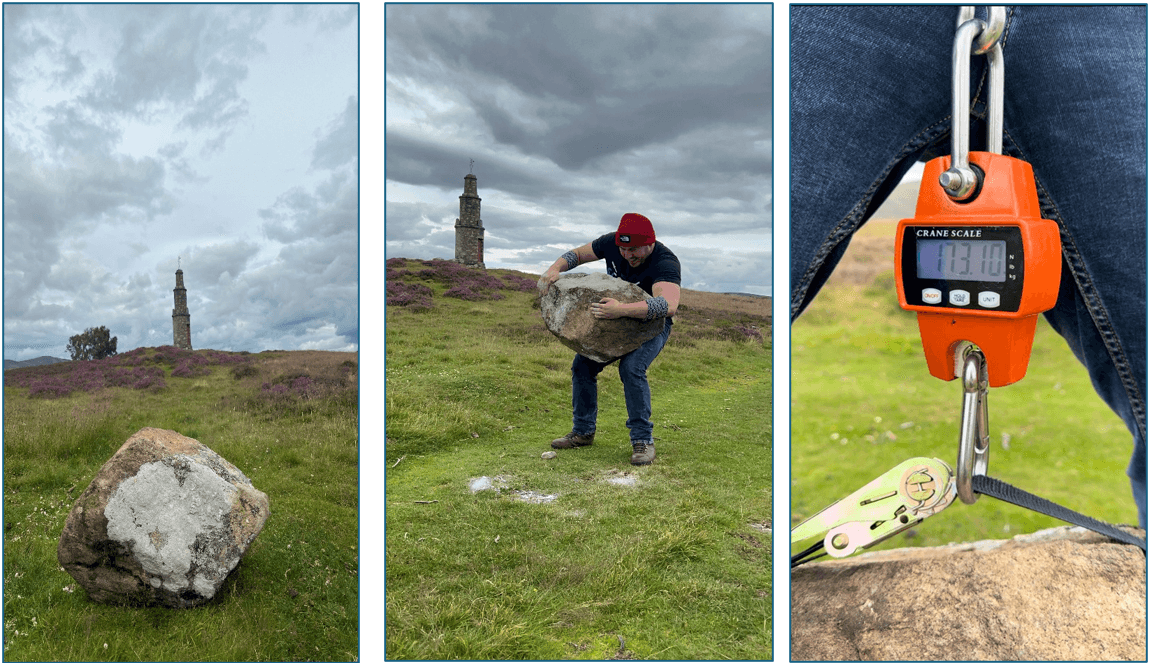
Waiting on Confirmation
After the trip, I still hoped to hear from Mr. Skene. But months went by, and nothing came back. It seemed like a dead end. Then, while speaking with fellowstone hunter Callum Stott, who had been uncovering stones across England, I felt renewed inspiration to resolve the mystery. I reached out again, this time to Mr. Skene’s wife on Facebook. I sent her the videos of Dawn and I lifting the small white stone at the tower.
She showed them to her husband. And at last, the confirmation came: this was indeed the stone lifted by the Masons of Glen Esk.
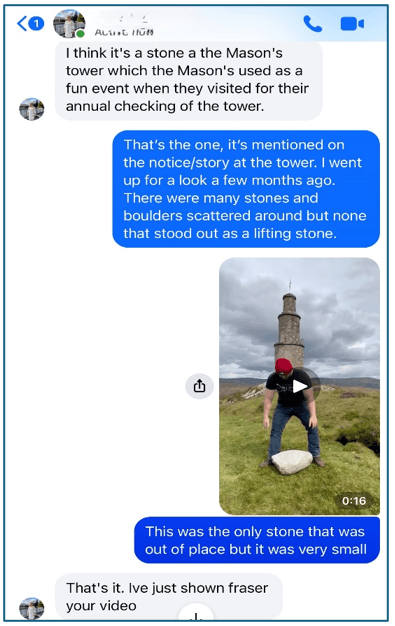
A "new" Historic Stone
Although modest in size comparedto other historic stones, this confirmation was wonderful. The little white stone has the ingredients of a ‘true’ historic one: a connection to local tradition, a story pinned to the door of the tower, and confirmation by long-time residents of the glen.
It may not date back centuries,but it stands as a genuine part of local heritage, a stone once lifted by
Masons and now returned to the wider lifting community.
The site is now what I would calla hybrid: one historic, accessible stone in the 58kg range, perfect for many lifters, and one newly introduced modern testing stone at 173kg for those seeking a bigger challenge. The heavier stone is similar in feel to the great stones of North Uist, almost like a smaller cousin of Big Donald’s Stone. For lifters considering a trip to the island, the Modlach Stone offers a fine
preparation.
Closing The Circle
This journey, from a brief forum mention, to dead ends, to discovery, doubt, and eventual confirmation, shows the persistence sometimes needed to uncover Scotland’s lifting heritage. The Mason’s Stone of Glen Esk is now firmly back on the map.
Thanks are due to Mr. and Mrs.Skene for confirming the stone’s identity, to the staff of Glen Esk Folk Museum for their help in connecting me with local knowledge, and to Dawn for her role in spotting, lifting, and insisting on the importance of the small white stone when I was ready to walk past it.
In Glen Esk, the stones now occupy the same site: the historic Mason’s Stone and the modern Modlach Stone, both ready for lifters to test themselves. One offers tradition, the other a greater challenge, and together they almost certainly make Glen Esk a worthy addition to the canon of Scottish lifting sites.
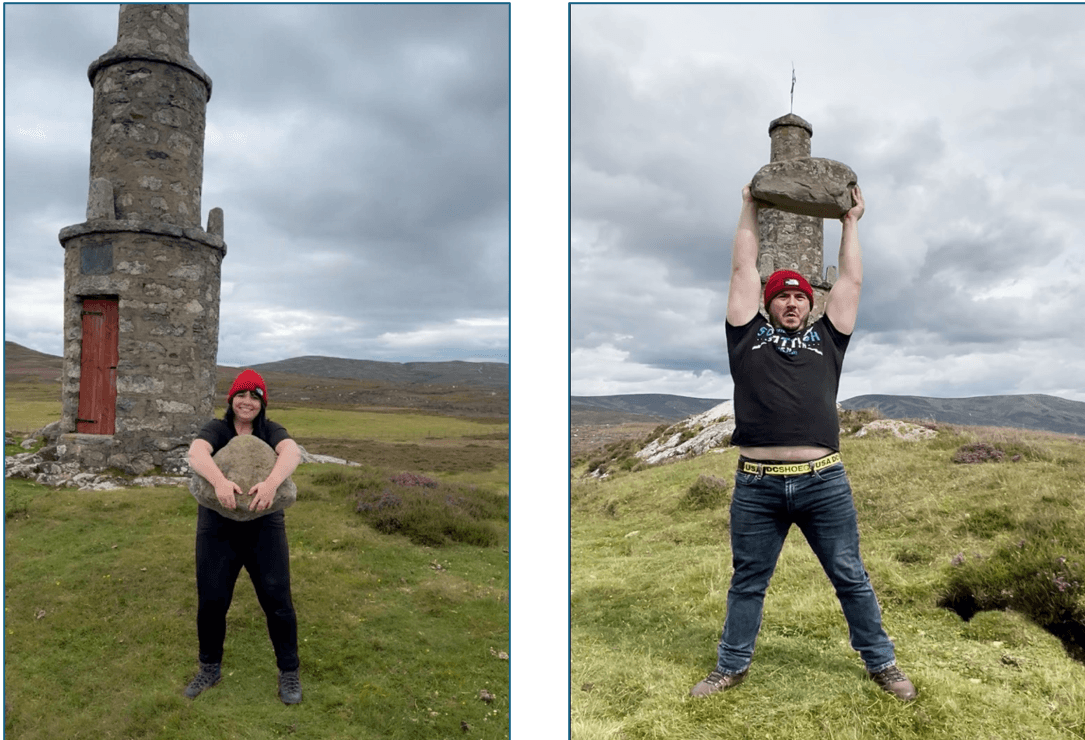
Appendix1 – Online article about the Masons lifting a stone at the Modlach Tower:
